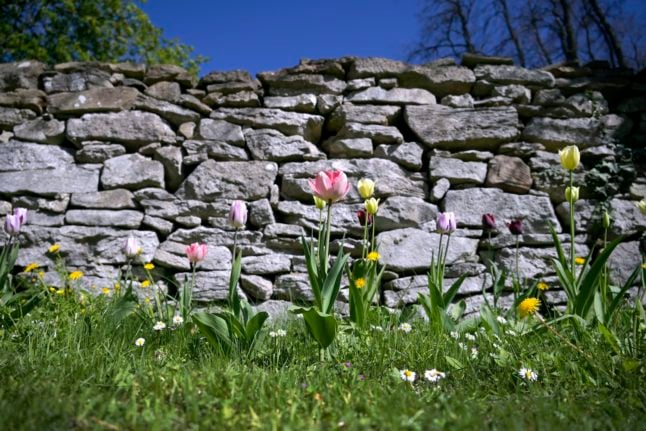Linköping
This student city is a great spot to visit in the spring, where the uteserveringar (outdoor terraces at cafes and bars) will be bustling, especially at the central Stora Torget (Main Square).
You can also take a peaceful walk or boat trip along the Kinda Canal, and don’t miss the experience of the Gamla Linköping Open Air Museum which offers glimpse of life in Sweden centuries ago.
READ ALSO: Six signs spring is on its way to Sweden
View this post on Instagram
Gotland
Just a ferry ride away from Stockholm, this island has long been the go-to place for Swedes’ weekend escapes. Its popularity means it gets very busy over the summer, especially around the week-long political festival Almedalen, so spring can be a savvy choice as many bars and restaurants will be re-opening after a winter break, but prices and crowds aren’t yet at their peak.
Easter may have already been and gone, but Visby’s Easter parade, where thousands of residents dress up in creative costumes, is something you need to do at least once in your lifetime.
Take advantage of the chance to experience the historic town of Visby at a quieter period, but don’t forget to venture out of the city and into the more secluded natural parts of the island if you have the time. Along the western coast, there are cliffs, beaches, small villages and historic ruins to explore.
Grinda
Stockholm’s archipelago is home to thousands of islands, and you could spend weeks hopping from one to the next. In the spring, ferry departures are running but on a much more limited schedule than in the summer, so you may prefer to visit one of the nearer, more accessible islands.
Grinda is an excellent pick, with a farm that children will enjoy plus peace and quiet in nature for all the family and the option of having a meal or drink at the popular Grinda Wärdshus.
Skuleskogen National Park
Northern Sweden isn’t just a great winter destination, but its mountain landscapes are perfect for hikers in the spring, summer and autumn too. It offers varied walking routes, with spectacular vistas over lakes and valleys, as well as the impressive Slåttdalsberget crevice.
Avoiding summer means you can appreciate the vast nature with few interruptions, and fewer pesky mosquitoes too, while flowers will give the forests a bit of colour. It’s a very accessible park, with the option of staying in small cabins, and routes for hikers of different abilities.
View this post on Instagram
Lake Siljan
This area of Dalarna offers unspoilt nature and an interesting glimpse into Swedish culture: you’ll see traditional red houses all around, and can enjoy a relaxing stay in any of the surrounding towns: Mora, Rättvik, or Leksand for example, or the smaller village Tällberg, long popular with tourists for its sunset views in particular.
Hike the Siljansleden trail or simply wander around the area, and soak up some culture at the museum dedicated to artist Anders Zorn as well as at his impressive family home Zorngården.
READ ALSO: Five great day trips to do from Gothenburg
Österlen
If in doubt, head south. A huge advantage of this part of Skåne is the wide range of cultural activities, in case you find the weather unexpectedly cool or rainy. Glimmingehus, for example, is Scandinavia’s best preserved medieval stronghold.
But the area also boasts the nickname ‘Sweden’s Provence’, and in pleasant weather you can explore on foot or bicycle, taking in charming small villages and the coast. Can you believe the picture below was taken in early April in Sweden?



 Please whitelist us to continue reading.
Please whitelist us to continue reading.
Member comments